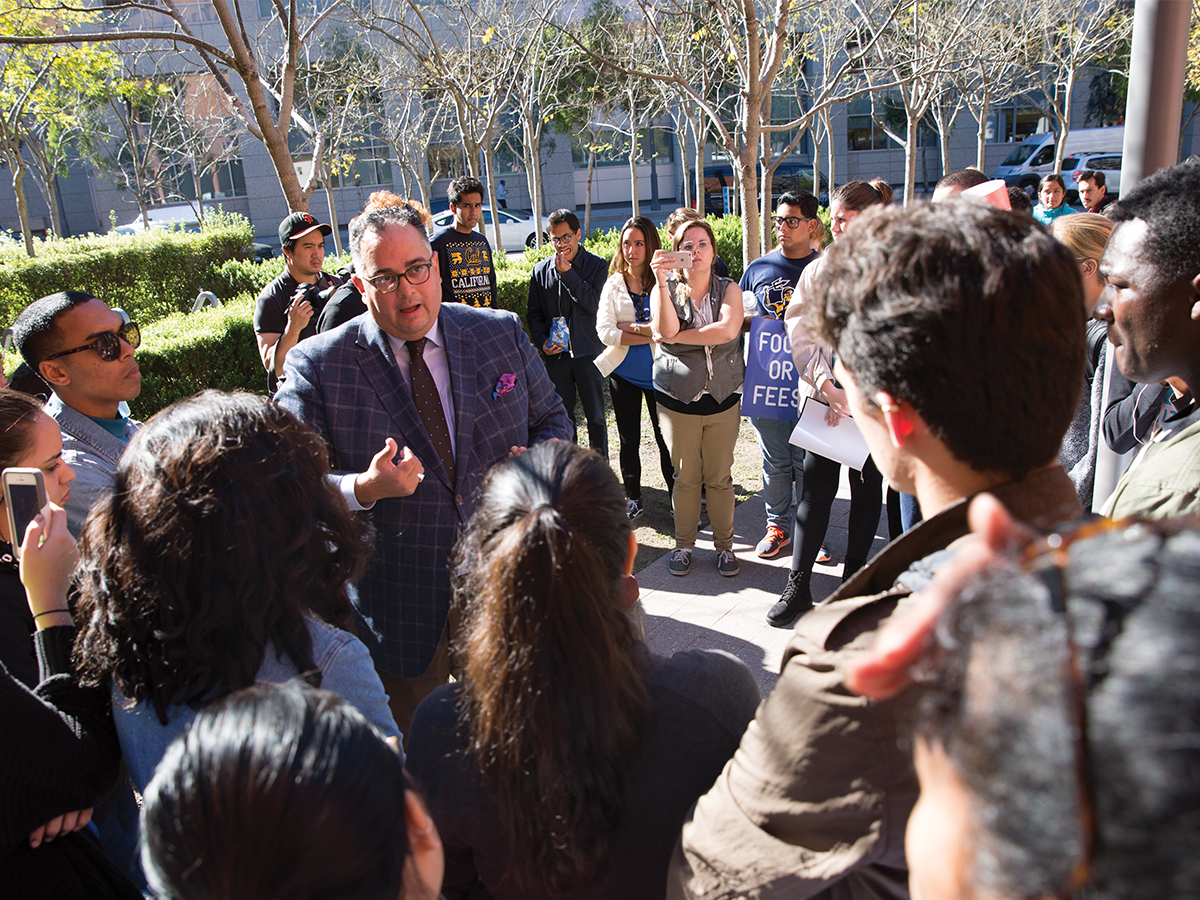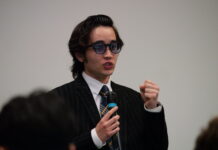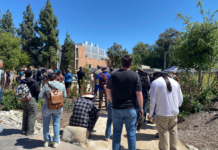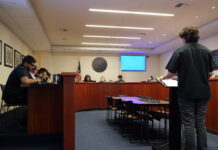
In what became a scene of chaos, where some student protesters sat inside the UCSF Mission Bay Conference Center after being peacefully forced out of Thursday’s (Nov. 17) UC Regents meeting by police and others exited entirely, a few regents stood outside to speak with and acknowledge the concerns of protesters. One of those was UC Regent John A. Perez, who, in his time representing downtown and east Los Angeles as speaker emeritus of the California Assembly, propagated policies geared toward affordable and accessible higher education, such as the Middle Class Scholarship Act, which has provided tuition relief of up to 40 percent for nearly 100,000 University of California and Cal State students. The Highlander was able to speak with Perez at the conclusion of the regents meeting in an exclusive interview focusing on student protests and college affordability, which can be found below. The interview has been lightly edited for clarity.
Myles: Your initial reaction to the events that played out today?
Perez: Oh, students protesting is not an unusual thing. There’s been less of it in recent meetings than there used to be and today I think was very interesting because students came in with a very clear point of view, wanting to make sure issues were addressed. I thought that the conversation actually during the meeting was pretty productive. You saw a variety of regents asking questions that were in line with some of the concerns the students expressed, but there wasn’t a good enough opportunity to hear from students, which is why I offered a solution to open up another public comment period for students to directly express themselves where they’re dealing with those issues. Unfortunately, that wasn’t approved so we took advantage of a good opportunity to end a meeting with students inside the building and a group of students outside the building and really took the conversation anywhere they wanted to go.
M: Now, maybe this is difficult for you to answer being that you aren’t amongst this current group of students, but why do you feel that students are so compelled to protest and vocalize their views in such a manner?
P: Well look, I think it’s one of the great UC traditions. Before I was a regent the only time I came to a meeting was to protest the regents, so I’ve gotta come at it with sort of a mixed bag. But I think it’s one of the things that makes the University of California special is we have this great tradition of students expressing themselves in every possible way. So students express themselves through their academic work, they express themselves through traditional means of communications and they express themselves in a great tradition of civil disobedience. And, you know, today was an example of students using multiple means of communication what they think the priorities oughta’ be.
M: What do those priorities ought to be as you accommodate for growing admission rates yet still want to maintain affordability?
P: Well look, I think actually they support each other. Expansion of opportunity and affordability should come hand-in-hand. And so we really have to dig deep on what the different revenue streams that the university have and how to align them in a student-centric way. And so today’s conversation was significant in that way. I think some of the questions raised were really digging deeply at what some of the impacts are when folks suggest the increases as a solution. I think the more distant you are from student reality, a $270 or $280 increase seems insignificant. When you are in touch with the reality the students are living with, you know how drastic the difference of $280 is, right? So for me I look at a $270 or $280 fee increase and I know that that’s a real difference in the quality of life for students. A student that’s on the edge of being able to feed themselves, gets pushed over the edge. A student that’s at the edge of being homeless for a portion or an entirety of a school year, that’s ($280) the difference. And so I think having these conversations, having an engagement makes sure that those folks who are making decisions — my colleagues on the board and myself — have a better understanding of the impact of the decisions that we make.
M: You mention homelessness, you mention hunger and these are recurring issues throughout colleges and universities and particularly UC campuses, for which the rates are growing as student admission grows. How do you feel we can mitigate these issues as they continue to persist?
P: So we … part of it is, their response is, ‘When there’s an increase in tuition, there is an increase in financial aid.’ Well that’s fine if you’re fixing financial aid for the real me. So having a conversation about the actual, real cost of attendance means you adjust to what it means to have significant, enough financial aid. Asking the question about whether the self-help requirement that we currently assume is the right number is important as well. So, you know, I used to, when I was in the legislature, I had a district whose median household income was $26,800. When you’re family is making $26,800 and you’re expected to do $10,000 of self-help, that’s an astronomical number. That’s very different than the impact of when your family is making $200,000 a year. And so these conversations move the dial. I hope that we’re gonna’ have a conversation about resetting what it is we’re trying to correct for in financial aid and making sure that we’re aiming toward having the appropriate level of financial aid for the real need that students have, not a formula that’s existed for a long time. Is the formula the right formula? Are we addressing the totality of the need of students? That’s gotta’ be foundational before we make any moves to have any shift in tuition at all.
M: What kind of changes would you want to see made to that traditional formula?
P: Well so I think the first question is getting our hands around the different costs, the different campuses and the reality students are facing. And the second is getting a better sense of the real impact of the self-help number and not only what it means to students we already have, but what it means to students in terms of sticker shock for students that we’d like to have.
M: Student voices are important for both sides, I believe, what do you think is the most effective way for those voices to be heard and to be heard in an effective manner?
P: See I don’t think that’s for me to decide. I think that’s for students to decide what they think the most effective way to express themselves are. It’s for me to be receptive to whatever way those voices are expressed and it’s for students to make the decision on what they think is the most impactful way to communicate. I think I’m somebody who is actively trying to listen and I think students have to figure out what messages that they’re able to communicate that get heard by different subsets of the regents and then figure out what combinations of communications that they use to have the greatest impact. But that’s a decision for students to make, not for us to impose on students.








